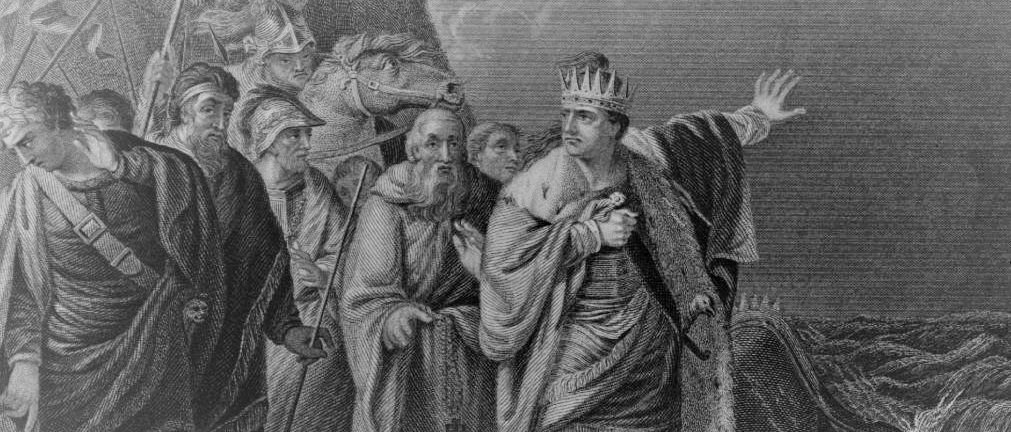King Canute
Posted on 4th January 2021
Canute was born circa 985 – 995 to the Danish Prince Sweyn Forkbeard who himself was heir to Denmark, the mother of Canute is unknown.
Little is known of Canute’s childhood although he is mentioned in the Flateyjarbok (manuscript) as being taught soldiery by Thorkell the Tall; other works mention him as being ‘of no great age’ when he first went to war.
Canute first became known when he was part of his father King Sweyn’s invasion against the English King Aethelred II in the summer of 1013; the invasion landed in the Humber (estuary on the east coast of Northern England). Battle continued to rage, but near the end of the year Aethelred II, known as Aethelred the Unready fled to Normandy in France.
Following this, Sweyn became King of England, however he died a few months later on 3 February 1014. His son Harald was to succeed him in Denmark and Canute remained in England. The English nobility recalled Aethelred from Normandy and he led an army against Canute who then fled with his own army to Denmark.
Canute spent his time in Denmark amassing a fleet to launch a further attack on England in 1015.
He landed in Sandwich, Kent and immediately sailed around to Wessex, who then surrendered to Canute. In 1016 Canute advanced to the north of England; finding little opposition he gained control of almost all of England excluding London.
Edmund Ironside became King of England following the death of Aethelred on 23 April 1016.
Canute travelled south again to London, but his armies were divided, many defected to Edmund who himself had travelled to Wessex to amass an army before Canute arrived. They battled at Penselwood in Somerset and Sherston in Wiltshire, but neither side was victorious.
The armies of the Danes and Edmund engaged again on 18 October 1016 leading to the battle of Assandun where the English were decisively defeated; a wounded Edmund fled westwards, pursued by Canute.
Edmund and Canute met to discuss peace; they agreed that England would be split. All lands north of London ruled by Canute, while London and the South remained with Edmund, however he died within weeks of the agreement and Canute became ruler of England. The circumstances of Edmunds death are unknown but many believe him to be murdered.
Reign 1016 - 1035
Canute’s coronation took place on 6 January 1017, he was to rule for nineteen years.
In July 1017 Canute wed Emma of Normandy, Aethelreds widow. To consolidate his rule, he eliminated his opposition, ordering the execution of many nobles.
Canute’s brother Harald, ruler of Denmark died in 1018 and Canute succeeded him. The English and Danish kingdoms were bought together and would dominate across Scandinavia and the British Isles.
There was some opposition to Harald’s rule in Denmark, but he managed to stabilise the country and returned to England in 1020.
In 1027 Canute travelled to Rome to attend the coronation of the Holy Roman Emperor Conrad II. In 1027 he wrote a letter proclaiming himself ‘King of all England and Denmark and the Norwegians and of some of the Swedes’.
Canute continued to battle for further control across Scandinavia, but having lost his key support in Norway he was unsuccessful.
He died in Shaftesbury, Dorset, England on 12 November 1035 and is buried in the Old Minster, Winchester. Following his death, he was succeeded in Denmark by his son Harthacnut ruling as Cnut III; the English throne was ruled by his other son Harold Harefoot.
Harold Harefoot died in 1040 and Harthacnut took the throne of England bringing the crowns of both England and Denmark together again.
Tagged as: Junior Middle Ages
Share this post:





